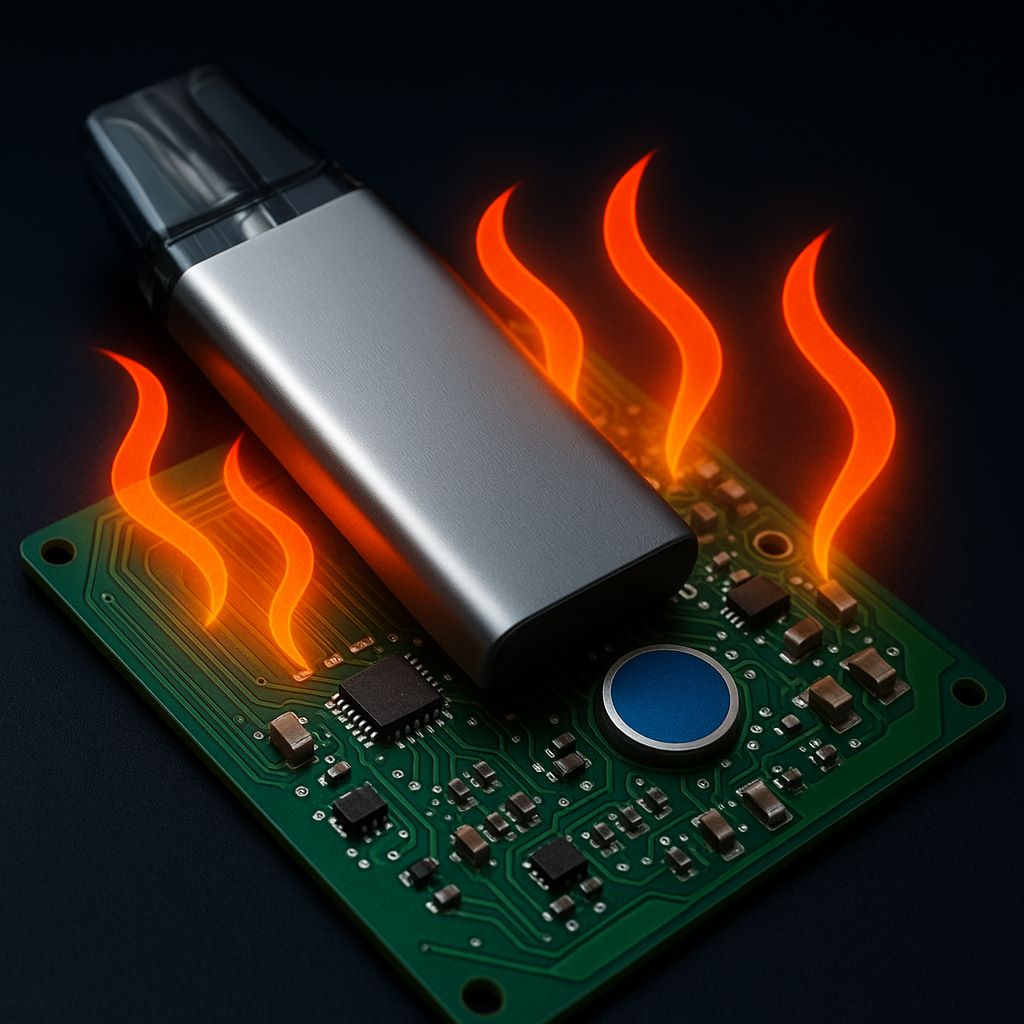Miniaturization Meets Vaping Innovation
As consumer expectations evolve, the demand for slim e-cigarette device main units has surged. Users now prioritize portability, aesthetics, and seamless functionality. To meet these demands, manufacturers must rethink the internal architecture of vape hardware. At the center of this transformation lies PCB design solutions.
This article explores how advanced PCB engineering plays a pivotal role in the miniaturization of electronic cigarette devices. We focus on compact layout techniques, high-efficiency routing, material selection, and embedded systems integration—all essential for next-gen vape solutions.
1. The Push Toward Smaller Vape Devices
1.1 Consumer Trends Favoring Slim Design
Modern users prefer sleek, pen-like e-cigarettes. Pocket-friendly size has become a market differentiator. However, reducing form factor poses electrical and thermal design challenges. This shift has moved PCB design from a support role to a central innovation driver.
1.2 Market Demand and Competitive Pressures
Brands competing in premium and mid-tier markets now require smaller PCBs without sacrificing battery life or vapor performance. As a result, hardware teams collaborate closely with PCB engineers from early development phases.
2. PCB’s Central Role in E-Cigarette Miniaturization
2.1 High-Density Interconnects (HDI)
HDI PCBs allow more components within smaller footprints. Through microvia technology and multi-layer stack-ups, engineers achieve greater signal integrity while conserving board space. These HDIs are critical for compact power control units in vapes.
2.2 Multi-Layer PCB Architecture
Slim vape devices rely on 4-layer or 6-layer PCBs to isolate power and signal traces. Multi-layer stacking enhances thermal efficiency and minimizes EMI. This balance is crucial for devices operating at 3.7V to 5V, especially with built-in protection ICs.
2.3 Integration of Passive & Active Components
PCB miniaturization includes integrating sensors, capacitors, regulators, and MCUs directly onto high-density boards. By embedding functions like airflow detection or temperature sensing onto the mainboard, component count drops while performance improves.
3. Design Considerations for Compact Vape PCBs
3.1 Layout Optimization for Heat Dissipation
A thinner device leaves little room for heat sinks or airflow. PCB designers must use thermal vias, copper pours, and heat-tolerant materials to prevent hotspots. Materials like FR4-TG170 offer better stability under prolonged use.
3.2 Power Efficiency and Battery Management
Miniaturized e-cigarettes require efficient battery regulation modules. This involves integrating low-dropout regulators (LDOs) and power-efficient MOSFETs into the PCB design to minimize current loss.
3.3 Embedded Firmware and Modular Traces
Instead of standalone chips, many brands now prefer MCUs with embedded firmware for firing control and protection. PCB traces are designed to modularly connect coil drivers, LED指標, and charging circuits, enabling flexible configuration.
4. Manufacturing Challenges and Solutions
4.1 Component Sourcing for Miniature Boards
Small PCB assemblies depend on ultra-compact passive components, sometimes down to 01005 package sizes. Manufacturers like RIMYI address this through partnerships with tier-one component vendors for dependable, miniaturized supplies.
4.2 Assembly Tolerances and Testing
Maintaining tight tolerances in soldering, placement, and shielding is more critical at micro scales. RIMYI employs AOI (Automated Optical Inspection) and in-circuit testing to validate board integrity before integration into devices.
4.3 Environmental Compliance
With global markets tightening regulations, compact PCBs must be RoHS-compliant, and materials must pass tests for toxicity, insulation resistance, and fire safety, even at micro thicknesses.
5. The Synergy of Design and Function
5.1 Functionality Without Compromise
Despite miniaturization, users still expect instant heating, accurate puff control, and smooth charging. PCB engineers achieve this through integrated circuits, low-resistance paths, and dynamic load balancing within the board design.
5.2 Customization for OEM/ODM Clients
RIMYI supports custom PCB layouts for ODM clients needing brand-specific features, such as dual activation modes or smart puff analytics. These features are layered directly into the PCB firmware and layout.
5.3 Modular Upgrades and Compatibility
To extend product life cycles, modular PCB designs support drop-in upgrades—new sensors, higher capacity batteries, or BLE chips—without requiring full device redesigns. This backward-compatible approach supports sustainability.
結論: PCB Design—The Core of Vape Miniaturization
The evolution of the slim e-cigarette device’s main units hinges on continuous PCB innovation. Through density optimization, material engineering, and embedded intelligence, PCBs now determine a device’s form and function.
RIMYI’s approach to vape PCB solutions combines technical excellence and regulatory foresight. As global demand for slimmer, smarter, and safer vaping products grows, our PCB strategies lead the way in sustainable miniaturization.
In closing, miniaturization is not just a hardware challenge—it’s a design philosophy. And at the heart of it all are advanced PCB design solutions, transforming how the future of vaping is powered, shaped, and delivered.


